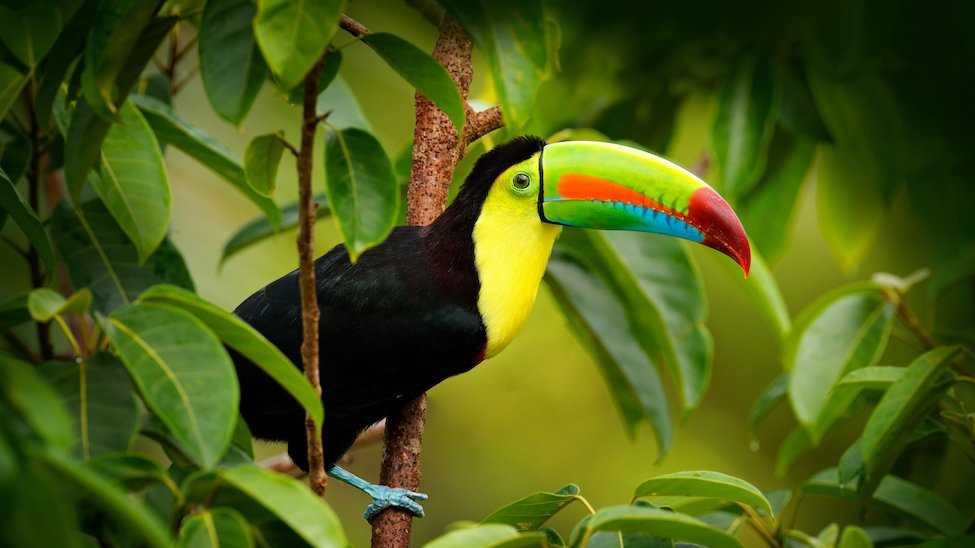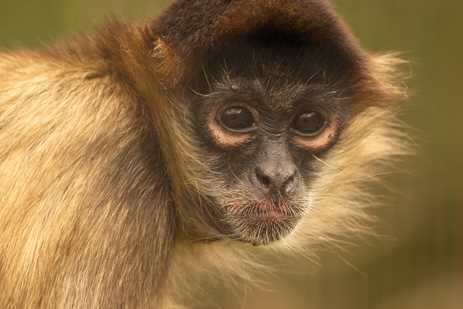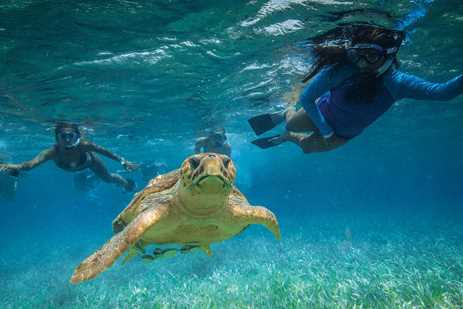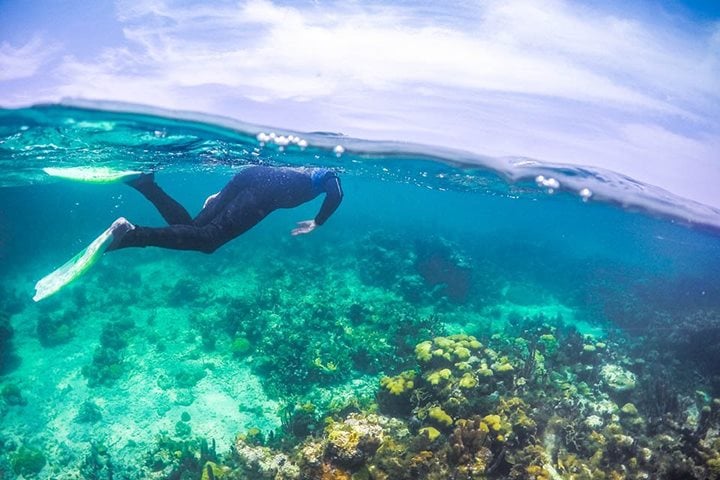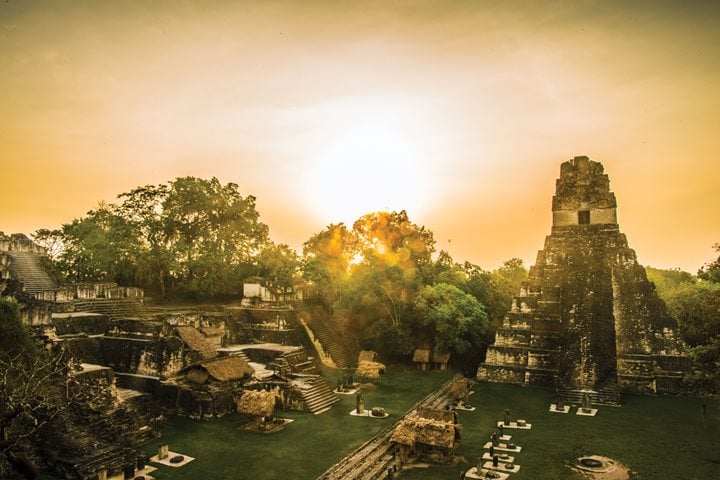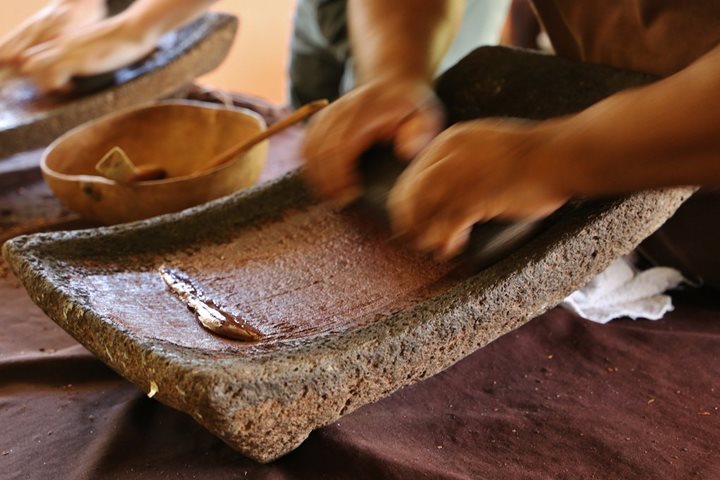It’s a sunny morning in Mayflower-Bocawina National Park in southern Belize. The surrounding forest seems still—at least to the untrained eye.
But take a beat and it comes alive: insects buzzing, the rush of water, birds chirping and trilling. Gaze up at the canopy and listen for the strange, frog-like croaking call that precedes a flapping of black and neon—the most anticipated arboreal sight, the keel-billed toucan.
“The simple experience of seeing that toucan flying across the canopy can have a particular resonance for people,” says Ted Kenefick, a passionate birder and an Expedition Development Manager for Lindblad Expeditions. “It's a poignant, memorable experience.”
Get Inspired by Photos, Videos, Webinars, Stories, and Exclusive Offers.
Sign Up
Important Bird Areas: A Haven for Belize's Avian Population
It’s the kind of humble yet moving encounter that’s typical within Important Bird Areas, or IBAs—zones around the globe that are significant for avian conservation. These IBAs are selected by BirdLife International, a global conservation partnership focused on preservation and restoration of birds and bird habitat. BirdLife has designated more than 13,000 of these zones across 200 countries, ranging from dense urban centers to untouched wilderness, and from compact parcels of land to massive swaths.
New York City’s Central Park is one, designated for its importance as a migratory stop on the Atlantic Flyway. So is a massive swath of open ocean in the Pacific, a known feeding ground for seabirds. Establishing an IBA ensures that the zone is on the radar of local and global partners, and denotes it as high-priority for conservation, education, and restoration projects. And it’s not just a boon for avian lovers, says Kenefick. “These areas are important to all wildlife enthusiasts. Birds are just the most conspicuous wildlife on the planet other than ourselves. It’s important in terms of the bigger conservation picture as well.”
Despite being only 8,867 square miles, Belize has six of these designated IBAs—the highest proportion of IBA coverage to overall land area of any Central American nation. “The primary reason Belize has so many for such a tiny country is due to the diversity,” explains Kenefick.
“It has this incredibly diverse offshore marine bird habitat. The nearshore has its own unique bird life. And then one of the richest, most biodiverse regions of the country is in the flatlands and the Maya Mountains.” While surrounding countries may have more landmass, Belize’s conservation-minded approach to land management helps it punch above its weight. “Tropical forests are degrading and we’re losing them, but Belize stands apart in terms of how they’re linking habitats together and preserving those corridors,” Kenefick says.
Exploring IBAs on Expedition
A full 66 percent of Belize’s landmass falls within designated IBAs, and those regions alone are home to a whopping 550 bird species, according to BirdLife International. Two of those IBAs—Off-shore and Barrier Islands and the Maya Mountains and Southern Reserves—are key stops on our Belize voyages.
Travelers typically spend two days within the former zone, most notably at Half-Moon Caye, a barrier island that’s home to a large colony of red-footed boobies along with frigatebirds and other seabirds. “Red-footed boobies are not particularly easy to just come across,” Kenefick explains. “So this IBA is important in that way to birders, but in the bigger picture as well, it’s important to wildlife and conservation enthusiasts.” The island is so remarkable it was the first place in Belize to be federally protected—it was designated as a Crown Reserve in 1928, when the country was still under British colonial rule.
Despite the remarkable booby and frigatebird sightings, birding is hardly the main focus for Lindblad-National Geographic guests in the Belizean barrier reef. The bulk of the two-day window within this IBA is spent snorkeling above the technicolor coral reef, kayaking through the postcard-perfect blue waters, and strolling the coral-strewn sands—those once-in-a-lifetime booby sightings are merely a bonus.
The real birdwatcher’s dream, says Kenefick, comes on a one-day excursion to Mayflower-Bocawina National Park, situated within the Maya Mountains and Southern Reserves IBA. This 2,494 square mile swath encompasses nine forest reserves and seven national parks, among other protected zones, and is collectively home to 411 of Belize’s 615 bird species. “Everyone gets to experience the colony at Half-Moon Caye. But when we go inland, that’s when we have a specific birding group that splits off,” Kenefick explains.
That group is likely to spot oropendolas, yellow-and-black birds that build colonies of pendulous hanging nests, yellow-headed parrots, keel-billed toucans, and kingfishers, herons, and other water birds along the rivers. Since birders explore quietly and patiently, they’re sometimes rewarded with even more unique sightings, says Kenefick. “A lot of people end up going with the birders because people think birders see a lot more. And they often do—you’re moving very, very slowly, observing, listening, and it’s kind of all-immersive in the forest.”
That’s exactly the kind of meditative experience Kenefick finds gets new birders hooked. “Birding is about presence and stillness, just stopping to listen,” he says. “Even if I don't see anything, I always see something, whether it’s a butterfly or a flower. We get so off-track with the rhythms of nature, and it’s important to reestablish that when we can.”

